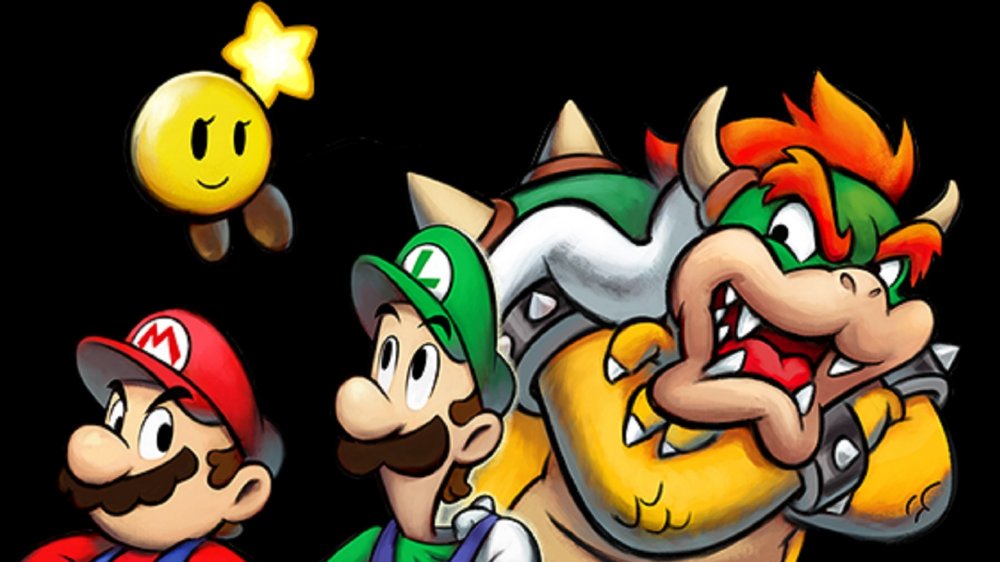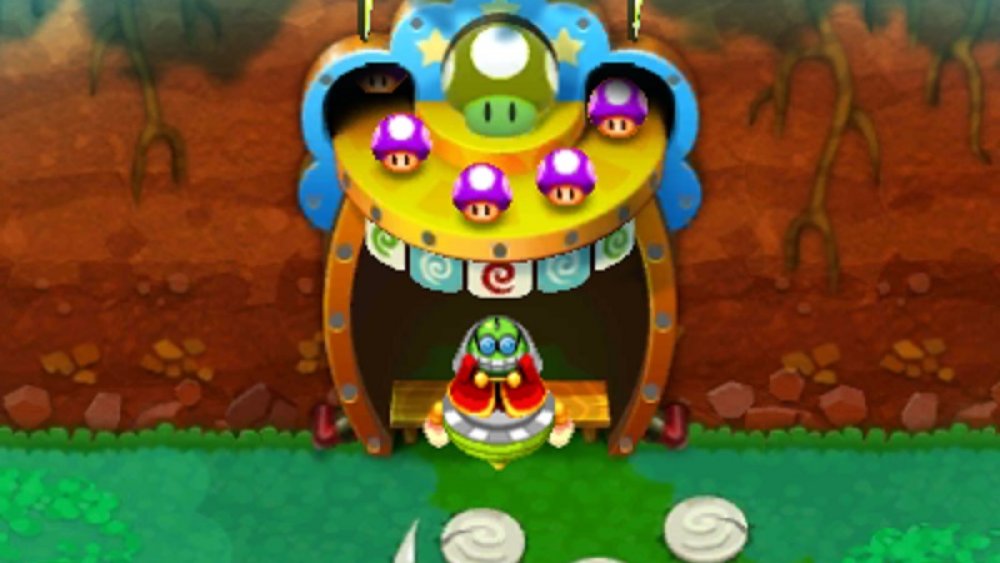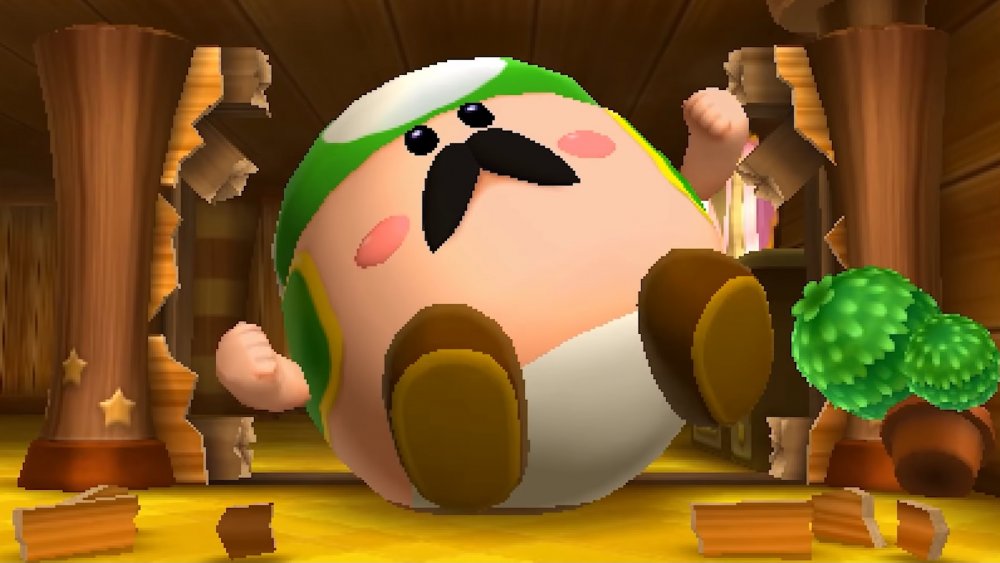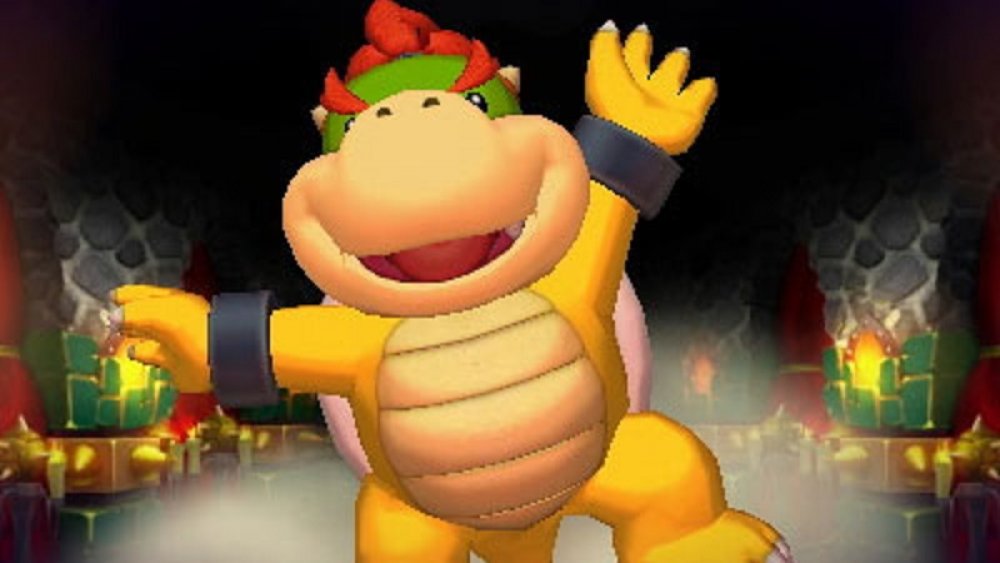The Truth About The Worst-Selling Mario Game Of All Time
We may receive a commission on purchases made from links.
In the past, you could always bet on a Mario game to bring in the bacon, but that changed when Mario & Luigi: Bowser's Inside Story + Bowser Jr.'s Journey hit the Nintendo 3DS. This remake of Mario & Luigi: Bowser's Inside Story (one of the best-reviewed entries in the Mario & Luigi series of RPGs) attempted to do to Bowser's Inside Story what Mario & Luigi: Superstar Saga + Bowser's Minions did to the original Superstar Saga. It seemed like a sure thing given the Superstar Saga remake's critical reception, but longtime Mario & Luigi villain Fawful apparently got the last laugh.
Bowser's Inside Story remake reportedly undersold like crazy. Even worse, the game's developer, AlphaDream, filed for bankruptcy shortly after release. So, what gives? Why did Mario & Luigi: Bowser's Inside Story + Bowser Jr.'s Journey sell worse than every other Mario game to-date, including the Virtual Boy Mario entries? Did it cause AlphaDream's untimely closure? The answers are difficult to nail down with certainty, but here are some facts that may shed light on the game and its paper (Mario)-thin sales performance.
AlphaDream skipped over Partners in Time
When AlphaDream released Mario & Luigi: Superstar Saga + Bowser's Minions, many gamers expected the company to remake the next entry in the franchise: Mario & Luigi: Partners in Time. After all, when a company is on a remake kick, it makes sense to follow the release order. That's what Capcom did with Resident Evil 2 and 3, but AlphaDream and Nintendo bucked this thinking and skipped straight to Bowser's Inside Story. Why? Because Bowser's Inside Story was more popular.
During an interview with Game Informer, producer Akira Otani stated that AlphaDream remade Bowser's Inside Story because "[it] was the best received title in the series." Moreover, its main villain, Fawful, helped influence the decision. According to Otani, Fawful was "received very well overseas," so the companies wanted to "bring him back" — similar to Ridley, King K. Rool, and the Belmonts being added to Super Smash Bros. Ultimate. Moreover, while Fawful appears in Partners in Time, he just has a bit part that serves as a taste of things to come in Bowser's Inside Story.
This is why gamers complain about framerates
Higher fidelity graphics always come at a cost. The more you push a graphics card, the fewer frames it can render at once, and if you push it too far, you risk setting your console on fire. Sacrifices have to be made somewhere, and the Bowser's Inside Story remake trades frames for fidelity.
Bowser's Inside Story + Bowser Jr.'s Journey features notoriously subpar framerates. The game struggles to run a smooth 30 fps (especially during the memory-gobbling Giant Bowser fights), which can make properly timing moves a challenge. Plus, the remake is just slower than the original. Given Bowser's Inside Story + Bowser Jr.'s Journey's graphical fidelity, this slowdown could have been considered a necessary evil if it weren't for one important detail: the Superstar Saga remake.
Somehow, AlphaDream managed to reportedly cram 60 fps worth of performance into the Superstar Saga remake. The company showed it could provide a better-looking game without sacrificing any frames, so what happened to the Bowser's Inside Story remake? Why couldn't AlphaDream make lightning strike twice? The answer probably died with the company.
The side story that should have stayed on the sidelines
While remastered, upgraded graphics are usually enough for remakes, AlphaDream added a special ingredient to the concoction: a new side story in the form of Bowser Jr.'s Journey. Following the formula of Bowser's Minions, players could once again wade into battle with classic Mario enemies such as Goombas and Paratroopas. These modes were designed to extend the game's content length, but many gamers felt they were wasted cartridge space.
Despite critics and gamers adoring the main mode, Bowser's Minions was not appreciated. Player reviews called it "mind numbingly boring," while professional YouTubers used words such as "shoehorned." Site reviews tended to be more forgiving, but that's not a redeeming quality since many described the mode as "shallow," "dead weight," and "Marmite."
Long story short, Bowser's Minions was generally viewed as an unwelcome addition to the Mario & Luigi experience, and Bowser Jr.'s Journey likewise received poor reviews. Had the developers just delivered a solid remaster of the original game with better graphics and some quality of life improvements, gamers might have found little to complain about.




